Fred Patten: A Lifetime of Dedication; ‘Furry Fandom Conventions, 1989 – 2015’
I’ve never gotten to interview Fred Patten personally, though he’s very amicable and we’ve exchanged letters. The reason is simple. Before I interview someone, I research who they are, what they do and what they’ve done. The research allows me not only to write better interviews and articles, but also, I believe, it gives me the privilege of finding out new things about the inhabitants of our shared furry society, our culture, our stories. I haven’t been able to interview Fred Patten to my liking because, as it stands now, while I’m being constrained by normal every day life as both a worker and a self-sustained college student, Fred’s background as a fandom member is absolutely overwhelming. I don’t think I can do him justice, though I can try to introduce him.
A 76-year-old furry from Southern California (Western US coast), Fred is a retired librarian and documenter, with a Master’s Degree in Library Science. It comes as no surprise that, as such, he’s an avid reader, an industrious book reviewer, and a writer. After becoming greatly involved in the Sci-Fi fandom in the 60s, he found out about anime & manga, and became a co-founder of the first American anime fan club in 1977. He partnered with Richard Kyle (creator of the term “graphic novel”) to open a bookshop in California, and wrote to Japanese publishers to import their manga overseas, to the US, for the first time. He’s interacted with Osamu Tezuka, Ray Bradbury, and other sci-fi & manga authors. Considered one of the leading Japanese cartoons experts and promoters up to the 90s, he started becoming involved with the Furry fandom as it diverted from the Sci-Fi fandom, in the 1980s.
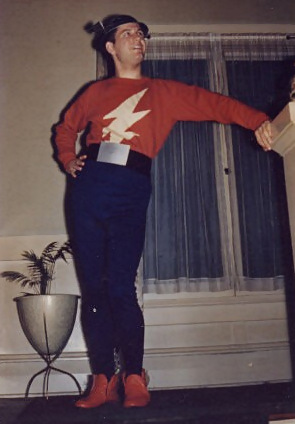 |
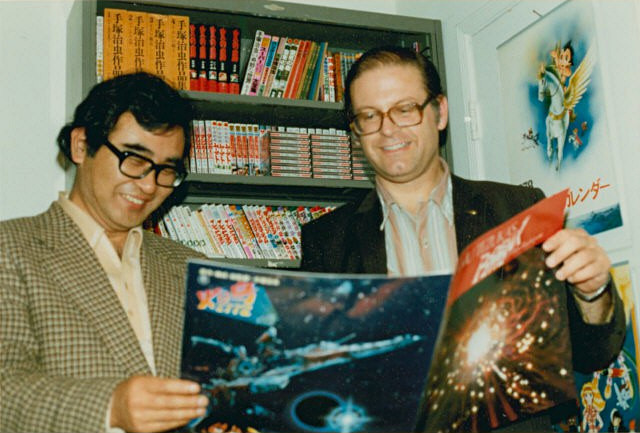 |
|
|---|---|---|
He became editor of Rowrbrazzle, one of the first furry magazines, from 1989 to 2005. ConFurence 0: Yep, he was there too! As a furry book reviewer, he’s worked with magazines Yarf! (1990-2003), Claw & Quill (2004-2005), Anthro (2005-2008), and Renard’s Menagerie (2008). As a furry literature promoter, he’s edited a number of furry anthologies, the latest of which are ‘Gods with Fur’ (2016) and ‘Dogs of War’ (2017), a collection of 23 short stories each, from different writers, about historic and original furry gods, and furry stories set in military scenarios. But he’s got many other books too! He is the co-founder and corresponding secretary of the Anthropomorphic Literature and Arts Association (ALAA), the organization responsible for the Ursa Major Awards, since 2001. He’s also a member of the Furry Writers’ Guild. His compilation of furry stories ‘Best In Show: Fifteen Years of Outstanding Furry Fiction’ won two 2003 Ursa Major Awards. He was inducted into the Furry Hall of Fame, of MiDFur (Melbourne, Australia), in 2011, an annual award that honors contributing members of the fandom for their loyalty and undying commitment to furthering the fandom’s culture worldwide.
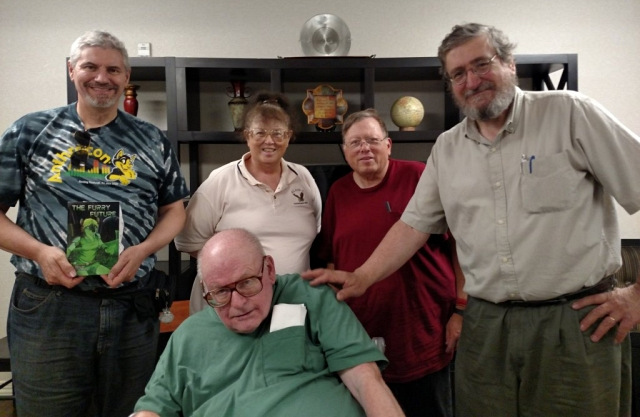
Fred has made a number of praiseworthy efforts to keep historic records of furry happenings throughout the years. As a current collaborator of furry news sites Flayrah and Dogpatch Press, he is still very active on the internet. He writes and comments with great insight based on his knowledge, experience, and research. You can read one of his many articles here (link⇒), an illustrated retrospective on the furry fandom. He also currently writes on animation and manga for the website Cartoon Research.
Fred’s latest published book is “Furry Fandom Conventions, 1989 – 2015”, a copy of which he kindly sent me for reviewing purposes. This book is a reasonably complete recollection of information and curiosities of all the furry conventions that have happened, since the first in 1989, up to two years ago. And boy, let me tell you, have there been many! The time and dedication put into this book are representative of Fred’s general disposition. Methodical and observant, some have described Fred as a “walking compendium of information”. But of course, all Fred could have written about, is events arranged and orchestrated by contributing members of the fandom, whether attendees or organizers. So there’s a bit of many many people in this book. Taking into account that to a great extent these massive gatherings are not-for-profit or non-profit, such a publication highlights and reinforces the sense of community that, to me, is embedded as a core value of the fandom.
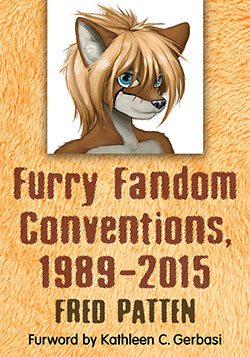
The ‘furword’ (wordplay on ‘foreword’) is written by Kathy Gerbasi, Ph.D. in Social Psychology and co-founder of the International Anthropomorphic Research Project (IARP). She’s a lovely cheerful woman, last seen as a spokesperson in the documentary ‘Furries’ by Eric Risher (2016) (link⇒). She very well points out that the book is an invaluable source as a historic archive, and one of its uses is documenting how some cons achieved success, while others did not, and why it actually happened. The change of date of ConFurence 10 (1999) from January to April, and its change of location from Buena Park to San Diego, was met with disapproval, and so was the amount of problems and unresolved complaints that the convention had. Its directors stepped down to pass on the duty to a different furry for ConFurence 11 (2000), but by that year, there were already other furry conventions in the US that had had better runnings, with which they competed in the area. Hence the progressive decline in attendance that resulted in the closure of the convention in 2003. It was not an advertisement for the con at a ‘queer lifestyle’ magazine which lowered its popularity, a false rumor that furry journalist Patch O’ Furr has repeatedly denounced (link⇒). Similarly, the book files the ending of the RainFurrest convention in 2015. Unresolved severe hotel vandalism worsened the relationship of the con organizers with its hotel, which resulted in revoking further hostings. This shows how important it is for con staff to stay on good terms with the venue owners, and for them to remind attendants that they can’t just do whatever they want but must remain respectful.
It’s not all saddening incidents though; in fact most of the conventions reported have stories of shared joyful activities and overall normalcy. There are curious, sometimes funny, tidbits, sprinkled throughout. One of these was CaliFur 4 (2008) being hosted at a hotel which also hosted a Japanese wedding party and a heavily drunken high-schoolers party. Attendees conflated the two, calling it the “drunken wedding of doom”. On another case, at RusCon 2000, attendees rented, from a circus, a tame lioness and a leopard, and took pictures with them.
The overall writing style of the tome is concise and informative, such that it reads more like an encyclopedia or a reference textbook rather than a novel, with entries dedicated to each different convention, ordered alphabetically. It includes a short intro on the fandom’s history, centered mostly on furry conventions. It also includes some illustrations pertaining to cons, such as logos, conbook covers or posters, mostly in black and white, and some in color. It always feels special to see someone made a beautiful furry drawing, with noticeable enthusiasm, for a gathering of furry friends, at some point in the past. This is our history, and I wish furries will admire it, some remember it, for as long as the fandom stays alive.
If there is something I would change to this first edition of the book, is adding some kind of map, or several maps, to have an idea of how conventions have multiplied and where they’re located. Maybe another possible arrangement of the entries would be by continent, in which case an appendix listing them alphabetically would be needed anyhow. One way or another it should be easier to search for conventions by country or state. This information is easily found out using a search engine on the internet, but it would be fitting to include it in the book in some form. The book has a link to a short video / GIF Huscoon made with the time-lapsed growth of furry conventions in North America (link⇒).
On the whole, “Furry Fandom Conventions, 1989 – 2015” is a must have for scholars either amateur or professional, who wish to have a record of our furry conventions, in a single convenient printed volume. It’s also the kind of book that greymuzzles who’ve visited conventions, and have some attachment to the fandom, will enjoy having in their collection.
The book can be found at the publisher’s website, McFarland (link⇒), and on other bookshop platforms such as Amazon. More information at Dogpatch Press’ article on the book (link⇒).
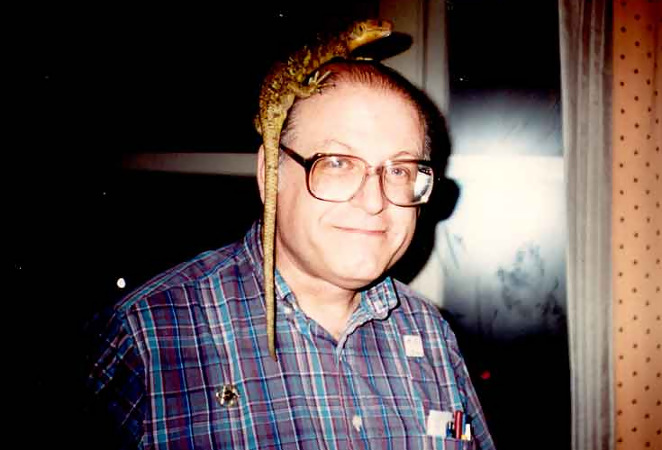 |
|---|

